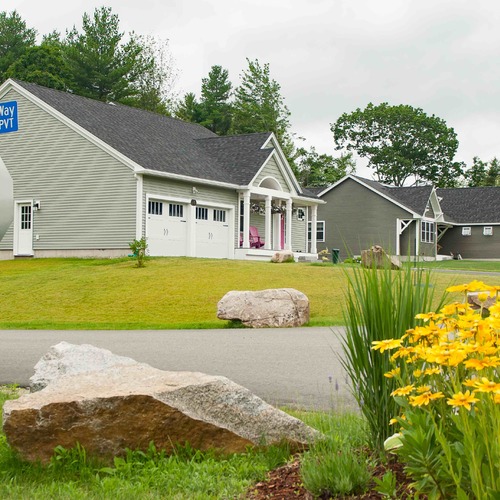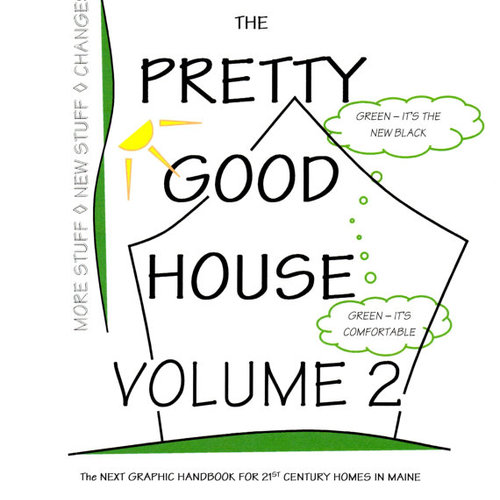
Image Credit: OTA Photos / Flickr
Not long ago in the southwest of England, a local community set out to replace a 1960s-vintage school with a new building using triple-pane windows and superinsulated walls to achieve the highest possible energy efficiency. The new school proudly opened on the same site as the old one, with the same number of students, and the same head person — and was soon burning more energy in a month than the old building had in a year.
The underfloor heating system in the new building was so badly designed that the windows automatically opened to dump heat several times a day even in winter. A camera in the parking lot somehow got wired as if it were a thermal sensor, and put out a call for energy any time anything passed in front of the lens. It was “a catalogue of disasters,” according to David Coley, a University of Bath specialist who came in to investigate.
Many of the disasters were traceable to the building energy model, a software simulation of energy use that is a critical step in designing any building intended to be green. Among other errors, the designers had extrapolated their plan from a simplified model of an isolated classroom set in a flat landscape, with full sun for much of the day. That dictated window tinting and shading to reduce solar gain. Nobody seems to have noticed that the new school actually stood in a valley surrounded by shade trees and needed all the solar gain it could get. The classrooms were so dark the lights had to be on all day.
Faulty energy modeling
It was an extreme case. But it was also a good example, according to Coley, of how overly optimistic energy modeling helps cause the “energy performance gap,” a problem that has become frustratingly familiar in green building projects.
The performance gap refers to the failure of energy improvements, often undertaken at great expense, to deliver some (or occasionally all) of the promised savings. A study last year of refurbished apartment buildings in Germany, for instance, found that they missed the predicted energy savings by anywhere from 5% to 28%. In Britain, an evaluation of 50 “leading-edge modern buildings,” from supermarkets to health care centers, reported that they “were routinely using up to 3.5 times more energy than their design had allowed for” — and producing on average 3.8 times the predicted carbon emissions.
The performance gap is “a vast, terrible, enormous problem,” in the words of one building technology specialist, and that’s not an exaggeration. Though much of the public concern about energy consumption and climate change focuses on automotive miles-per-gallon, the entire transport sector — including trains, planes, ships, trucks, and cars — accounts for just 26% of U.S. climate change emissions. Buildings come in at 40%, and they are the fastest growing source of emissions, according to the U.S. Green Building Council.
Eliminating the performance gap matters particularly for European Union nations, which have a legally binding commitment to reduce emissions by 80% to 95% below 1990 levels by mid-century. But knowing with confidence what savings will result matters for anybody trying to figure out how much to invest in a particular energy improvement.
Builders and occupants are not to blame
Researchers have generally blamed the performance gap on careless work by builders, overly complicated energy-saving technology, or the bad behaviors of the eventual occupants of a building. But in a new study, Coley and his co-authors put much of the blame on inept energy modeling.
The title of the study asks the provocative question, “Are Modelers Literate?” Even more provocatively, a press release from the University of Bath likens the misleading claims about building energy performance to the Volkswagen emissions scandal, in which actual emissions from diesel engine cars were up to 40 times higher than “the performance promised by the car manufacturer.”
For their study, Coley and his co-authors surveyed 108 building industry professionals — architects, engineers, and energy consultants — who routinely use energy performance models. To keep the problem simple, the researchers asked participants to look at a typical British semi-detached home recently updated to meet current building codes. Then they asked test subjects to rank which improvements made the most difference to energy performance.
Their answers had little correlation with objective reality, as determined by a study monitoring the actual energy performance of that home hour-by-hour over the course of a year. A quarter of the test subjects made judgments “that appeared worse than a person responding at random,” according to the study, which concluded that the sample of modelers, “and by implication the population of building modelers, cannot be considered modeling literate.”
The “garbage in, garbage out” problem
Predictably, that conclusion raised hackles. “The sample seems odd to me,” said Evan Mills, a building technology specialist at Lawrence Berkeley National Laboratory, “to include so many people who are junior in the practice, and then to be criticizing the industry at large.” He noted that almost two-thirds of the 108 test subjects had five years or less experience in construction. But Coley and his co-authors found that even test subjects with “higher-level qualifications, or having many years of experience in modeling,” were no more accurate than their juniors.
In any case, Mills acknowledged, “the performance gap is real, and we must be aware of models not properly capturing things. We have cases where modelers will come up with a savings measure that is more than the energy use of the house, because they are just working with the model,” and not paying attention to the real house.
That sort of problem — energy models showing unreasonable results — also turns up at the preliminary stage on 50% of projects going through the LEED certification process, said Gail Hampsmire of the U.S. Green Building Council. Designers have a tendency to take a “black box” approach, providing whatever inputs a particular energy model requires and then accepting the outputs “without evaluating the reasonability of those results,” she said. “You always have the issue of garbage in/garbage out, and the capability of the modeler to identify whether they are getting garbage out is critical.”
Finding a cure
So what’s the fix? The current accreditation requirements for energy modelers are “very gentle,” said Coley, but “when you’re trying to get something off the ground relatively quickly, you can’t send everybody back to college for three years.” In any case, the problem isn’t really education in the formal sense.
“It has to do with feedback,” he said, or the lack of it. The culture of building construction says it’s perfectly reasonable for architects — but not energy modelers —to travel hundreds of miles to see how the actual building compares with what they designed. For energy modelers, there’s not even an expectation that they’ll get on the phone with the building manager at year one and ask how energy usage compares with the original model. As a result, said Coley, energy modeling can become like theoretical physics: “You can very easily create a whole web of theories, and then you find yourself studying the physics of your theories, not the physics of the real world.”
The answer, he suggested, is a regulatory requirement that modelers follow up on their work by routinely checking their predictions against a building’s actual energy consumption. A system of modest inducements could also make that feedback more broadly available — for instance, by promising to take three weeks off the planning permissions process for developers who commit to posting actual energy usage to an online database. The Green Building Council has begun to require that sort of reporting for projects seeking LEED certification, said Hampsmire, with an online platform now in development “for building owners to track their own performance and compare it with other buildings.”
A second problem, according to Coley, is the tendency of government agencies to require simplified energy models at the start of the design process. The requirements often include certain uniform assumptions about energy use, making it easier to compare one building with another.
“Because you have to do that at the start, it becomes the default, and this sets up a kind of ‘Alice in Wonderland’ world, and it’s not surprising that modelers model this artificial world.” But at least in the United States that has become less of a problem in recent years, according to Hampsmire. Current building code requirements are “fairly good,” she said. “They don’t say, ‘Model energy use for a building occupied eight hours a day,’” or some other arbitrary standard. Instead, “they specifically state that all energy use has to be modeled as anticipated.”
Builders need realistic modeling
The takeaway from all this isn’t to discredit energy modeling but to improve it. Builders increasingly need realistic modeling, said Coley, by people with a deep knowledge of building physics and at least as much experience with real buildings as with energy models. Without that, the result will be even more $500-million office blocks with too much glass on the southern exposure, causing everybody inside to bake on a hot summer afternoon. Without smart energy modeling, the result will be a world spinning even faster into out-of-control climate change.
“This isn’t rocket science,” said the Berkeley Laboratory’s Mills. But then he added, “It’s harder than rocket science.”
Richard Conniff is a National Magazine Award winning writer whose latest book is House of Lost Worlds: Dinosaurs, Dynasties, and the Story of Life on Earth. This post originally appeared at the website Yale e360.
Weekly Newsletter
Get building science and energy efficiency advice, plus special offers, in your inbox.















19 Comments
Resolution?
Not long ago is rather vague. When was the project completed? Have any of the issues been resolved? The camera problem is easy, but what about the basic design? A super-insulated building in a mild climate with underfloor heating seems excessive. Did they even account for the heat generated by the occupants?
Generalizations and conclusions
Making generalizations from a few disaster stories is risky, and the author is skating close to the edge here. That said, I agree with several of the author's points.
1. I think that many architects and builders are illiterate when it comes to energy issues. That explains why some over-optimistic energy savings claims go unchallenged -- an experienced energy expert might notice that the claims don't pass the smell test, but no one on the team has the experience or knowledge to recognize the fundamental error.
It's amazing how often a builder or architect will claim that a certain measure will save $200 per year in expense for domestic hot water -- not realizing that the average U.S. family spends only $200 per year for their hot water energy needs.
2. As Michael Blasnik has explained for years, many energy modeling programs overpredict savings. For more information on this problem, see Energy Modeling Isn’t Very Accurate.
Brewer Apartments
Why was an image of the Passive House project in Brewer Maine used as part of this story? Has that building not lived up to its energy model? There's nothing in the text to connect to that project.
Photo selection
Sam,
I used a photo of the Brewer project because it was designed with the help of modeling software and I had it on file (I took the photo last year). I don't have a photograph of the building the author refers to in this post. I am not suggesting the energy model for the Brewer project was inaccurate.
Complexity
"This isn’t rocket science,” said the Berkeley Laboratory’s Mills. But then he added, “It’s harder than rocket science.”
I'll make much the same comment I made in the recent HVAC blog. It makes no sense to have buildings rely on processes that are described as being akin to rocket science. The constant refrain is that we need better education so that each person involved in the construction trade is fully conversant in the intricacies of building science. That's not the nature of the industry now, and it's a suckers game to think it will be in the future. What works are more forgiving, low tech solutions.
Response to Malcolm Taylor
Malcolm,
I'm all in favor of simplicity, like you. But if we embark on a national program to retrofit existing buildings to meet energy-saving targets -- as several European countries already have -- we need to understand the building science behind our retrofit plans, or we'll be wasting a tremendous amount of money.
Sometimes there is no substitute for study.
accuracy of different models
I wonder if, for instance, projects modeled with Passive House methods achieve much better and more accurate real world results than other modeling methods? There seems to be many methods out there each with their own assumptions.
Village Center Image
Scott, by using the image of the Brewer project you are indeed suggesting that the modelling at Brewer is inaccurate and not performing. At a time when we are working on several fronts to support working passive house projects and principals it does actual harm in perception by associating this particular project, whose performance hasn't yet been fully analysed, to more general problems. On behalf of phME members who participated in that project and on behalf of those of us working to promote sound and responsible development of public housing in Maine, I respectfully request that you pull the image of Village Center image from this story.
The post has a new photo
Naomi,
I have removed the photo of the Brewer project. The original caption did not say modeling for the project was inaccurate, but I apologize if it implied otherwise.
Thanks, Scott. I appreciate
Thanks, Scott. I appreciate it. I think it would be interesting to see if PH modelling (PHPP/WUFI) holds up to scrutiny better than others. Perhaps the topic for another column?
Demand centered feedback loops
I agree that feedback is critical, but trying to regulate it is only asking for more ineffective policing. If buildings could be ranked by usage in a public forum, that would provide transparency. Show predicted energy use and actual energy use alongside the energy modeler. Provide accountability.
Put Energy Use Intensity (EUI in kBTU/sf/year) on MLS. All of those let the market demand better numbers with a pull rather than forcing better numbers on the market with a regulatory supply push.
I wrote about this for residential buildings on GreenTech Media, and we've started a little calculator that lets you find the EUI of any building and compare it against homes in DOE's Building Performance Database. These are baby steps, but the beginning of solving this problem.
Lastly, it IS the fault of contractors and occupants as well. This isn't an either/or. It's a systematic problem that needs accountability. Until there is transparency of predictions and reality, we're stuck. BTW, I do this with our own projects, so we're trying to walk the walk.
Please, let's avoid "there should be a law" thinking, it doesn't lead anywhere.
Modelers need market incentives
Construction is a heavily planned market. Modelers need real world incentives to do a more accurate job. Tying real world performance to their bottom line would help. Of course the other end of that scale needs to balance or they will swing their models to show less than what is truly expected. Modelers' accuracy needs to be defined and recorded so that it provides reference to developers/ builders who use their services. A database of real world observation vs expected results would go far. This would force modelers to make changes to further accuracy. Sounds like they lack consequences for creating a poor model.
Seems to me that in most
Seems to me that in most cases, internet connected instrumentation could be left in place, providing continuing verification data.
Accountability?
If the problems with this 'not long ago' school had involved a structural collapse or a roof leak the designers would be fighting an expensive law suit right now, and their failures would be widely publicized in the trade press, along with detailed analysis of the no doubt multiple causes of failure and the path toward an allocation of financial liability. If this is happening why does this article give no details - or is there a link I failed to notice?
The lessons of failure
- as I'm sure as energy nerds we're all waiting with bated breath to find out if and how the recently applied external insulation on the Grenfell Tower contributed to the rapid and catastrophic fire spread. Critical lessons must be learned from these great failures.
Response to James Morgan (Comments #14 and #15)
James,
I agree completely that the anecdote about the problems "not long ago" at a school "in the southwest of England" would have been much more credible if the author reported (a) the name of the school, (b) the town where the school is located, (c) the date of the renovations, and perhaps even (d) the name of the architect, energy consultant, or builder. As it is, the anecdote sounds more like an urban legend than an accurate report -- which isn't to say that it isn't accurately reported, just that the story lacks confirming details.
Scott Gibson recently reported on the Grenfell Tower fire for GBA. Here is the link: Officials Investigate Role of Cladding in London Tower Fire.
Data confirming Passivhaus is bridging the 'Performance Gap'
Here's a link to a study conducted by Leeds University that looked at the measured performance of projects modeled in PHPP compared to their modeled predictions: http://www.tandfonline.com/doi/abs/10.1080/09613218.2014.979093?journalCode=rbri20
It found a remarkable correlation between the two. Other studies conducted on larger sample sizes have reached similar conclusions. My own personal experience designing projects in California corroborates these studies, with regards to both heating and cooling energy use. I agree with the author - there's no better design feedback loop than post-occupancy monitoring. Trust, but verify.
Response to Bronwyn Barry
Bronwyn,
Thanks for the link. The study shows that (a) PHPP is an accurate model, and (b) Passive House consultants tend to be well trained in energy modeling.
Bravo! Passive House consultants should feel a justifiable sense of pride in these results.
Reply to Nate Adams
Nate: Are you able to provide a link to the EUI calculator?
Real world data would be useful to help interested people figure out which factors are most important.
I'd like to see a simple spreadsheet with several data points:
Conditioned square footage
Number of occupants
Total energy use in kwh/year
Heating and cooling degree days
Blower door results
Insulation R values
Window and door specs and % of wall area (N,S,E,W).
Log in or create an account to post a comment.
Sign up Log in